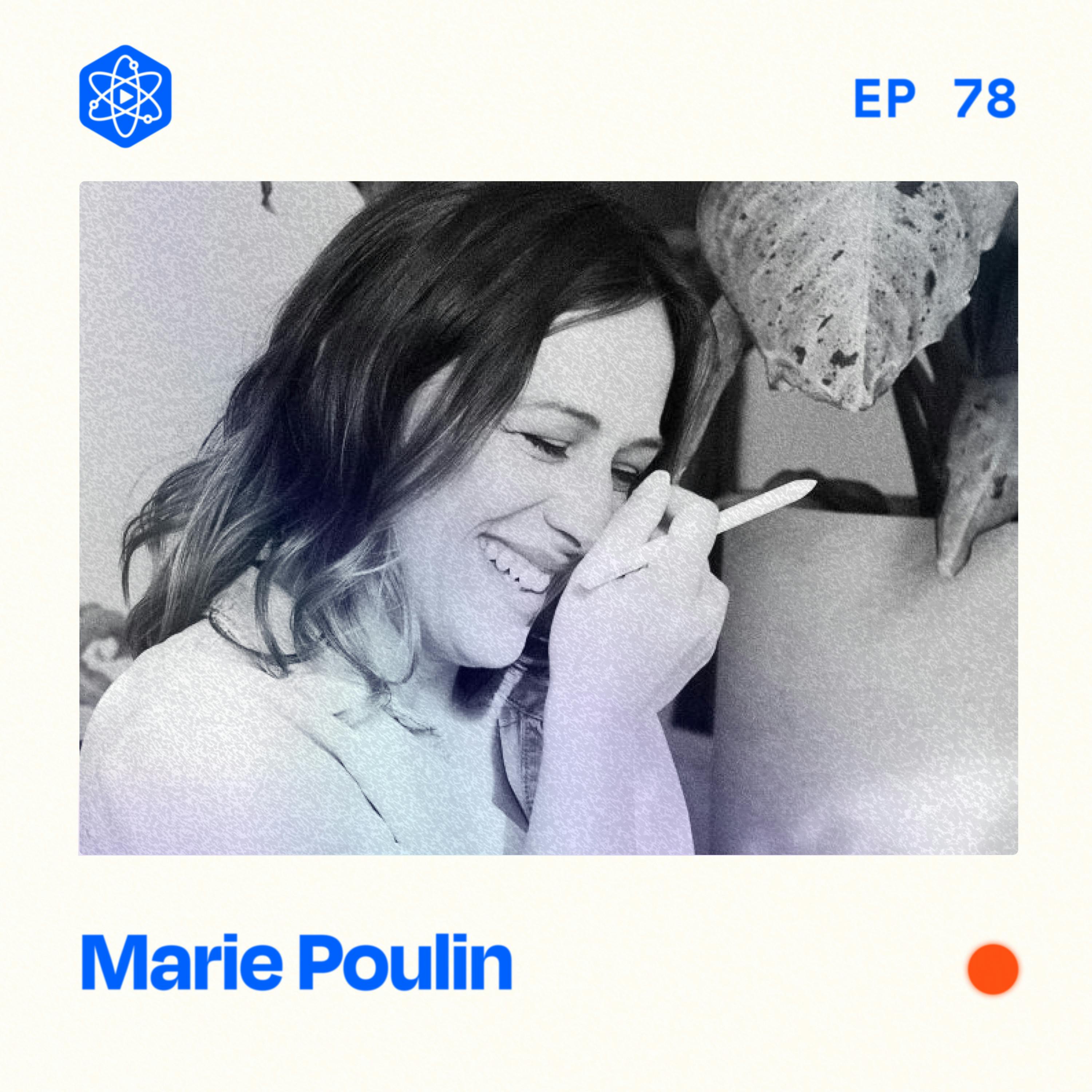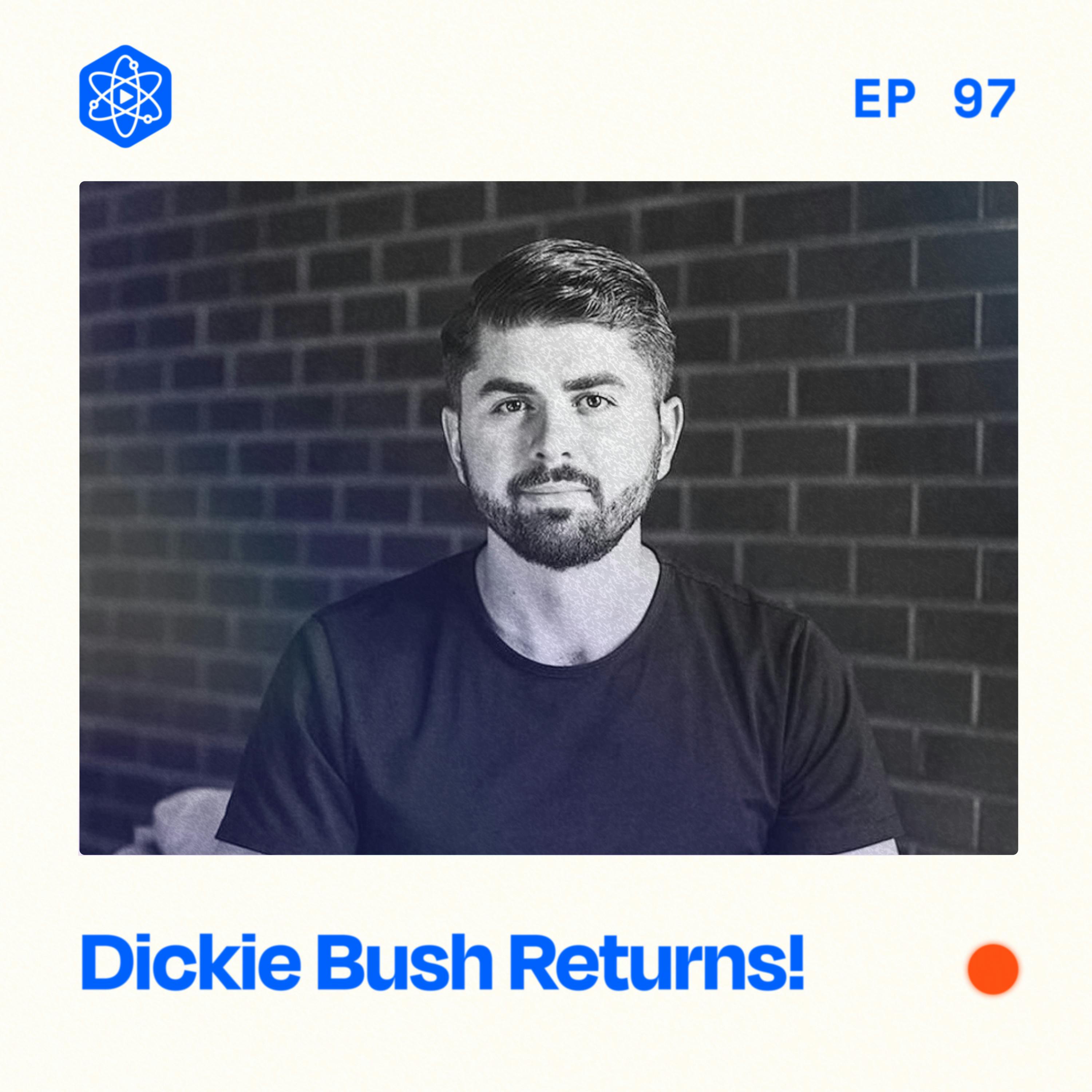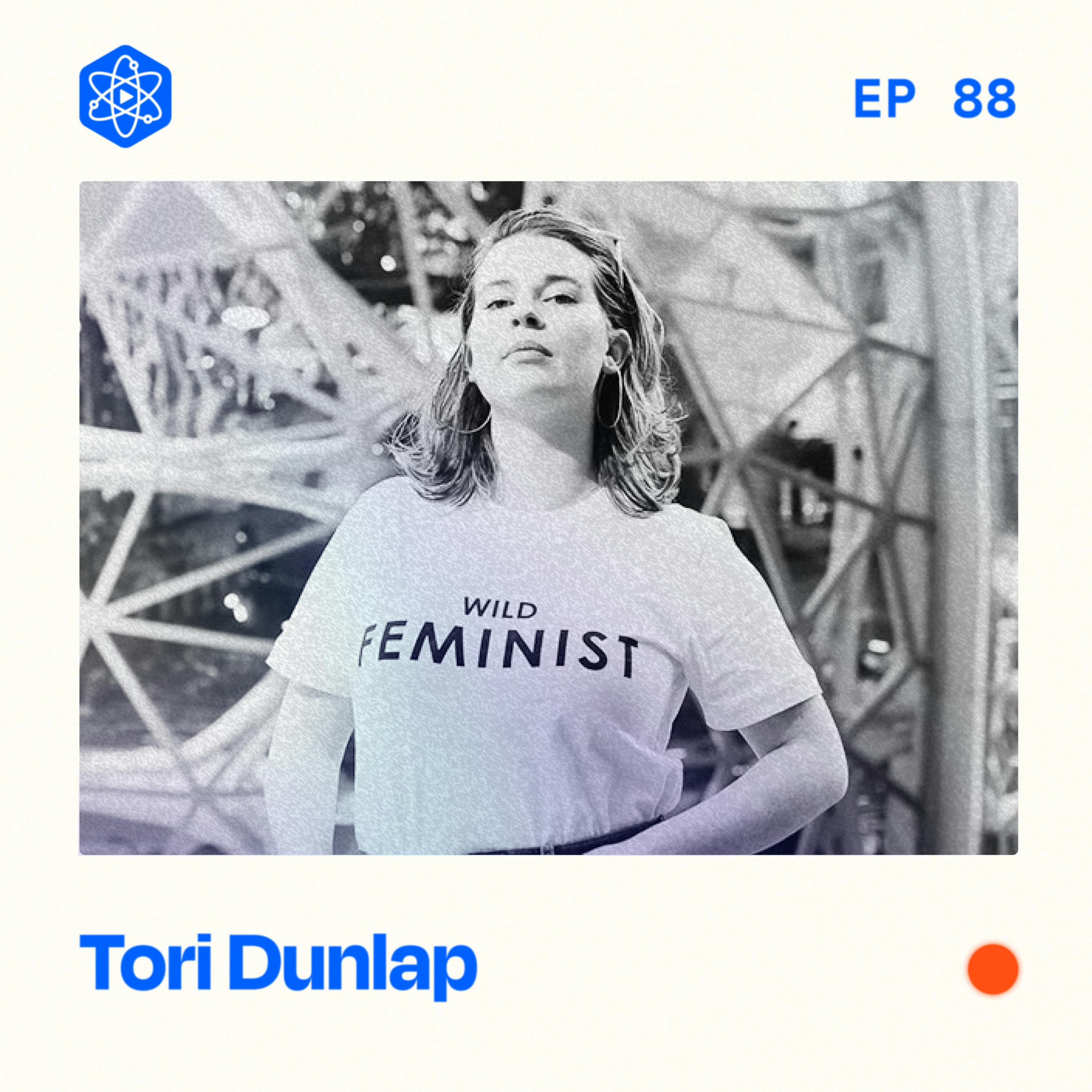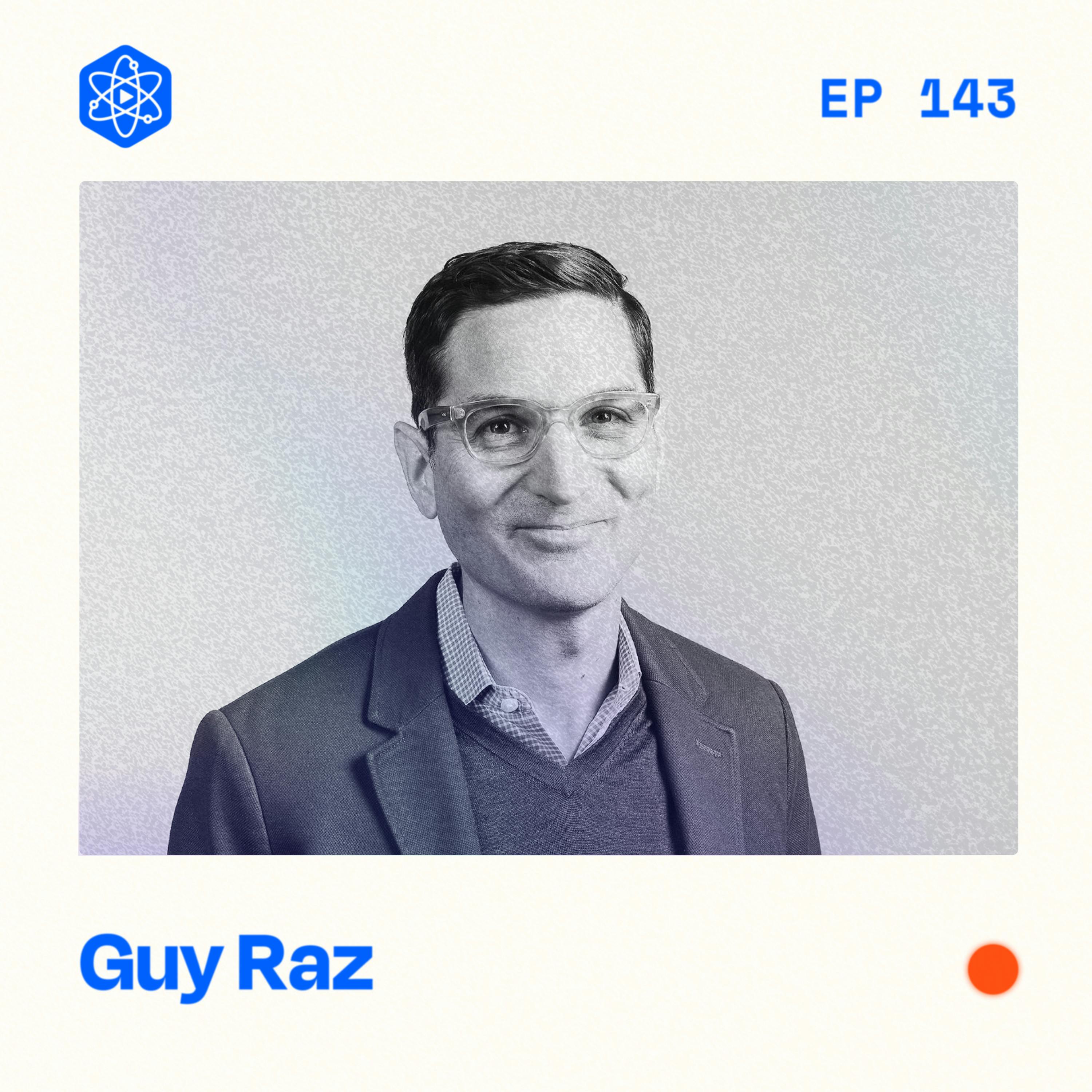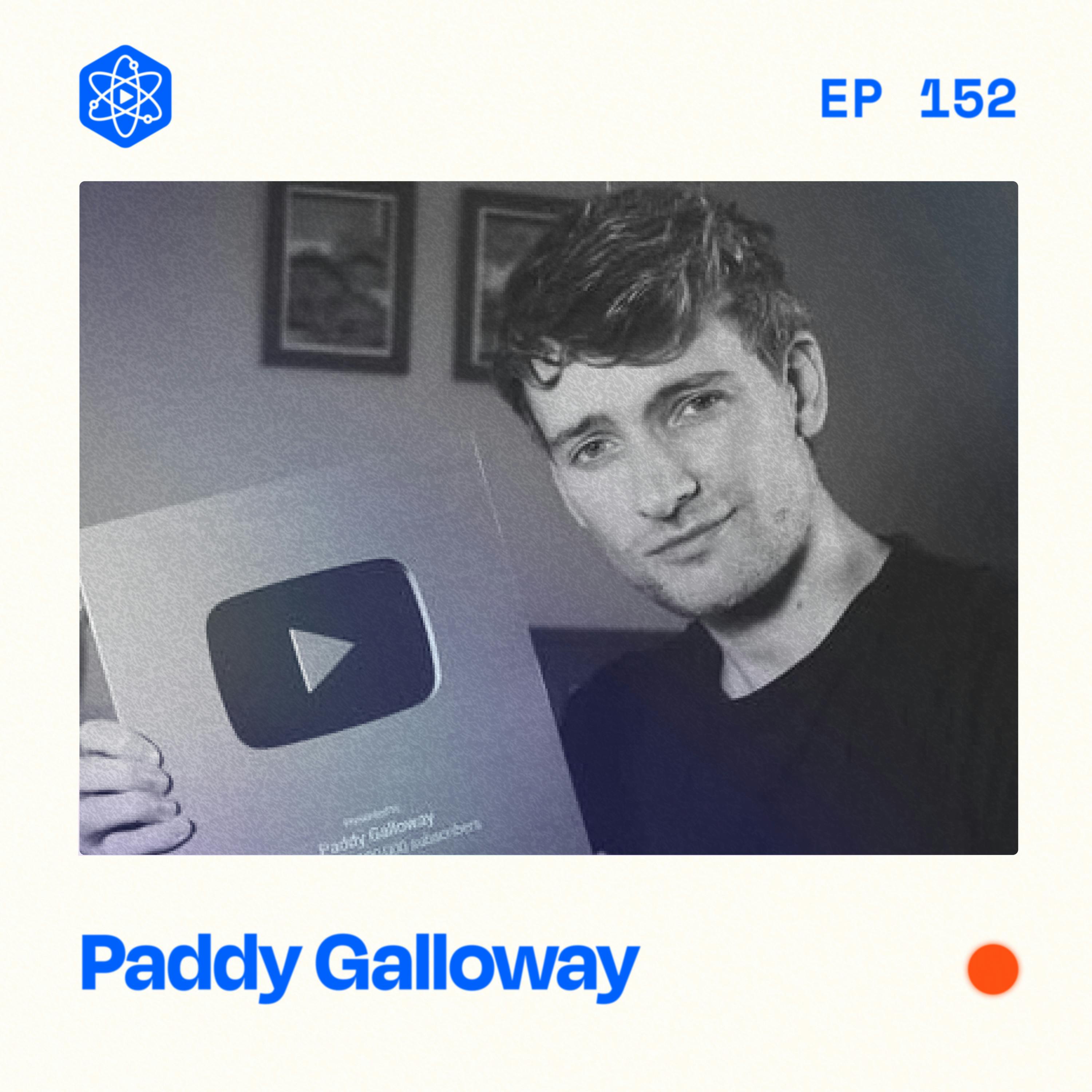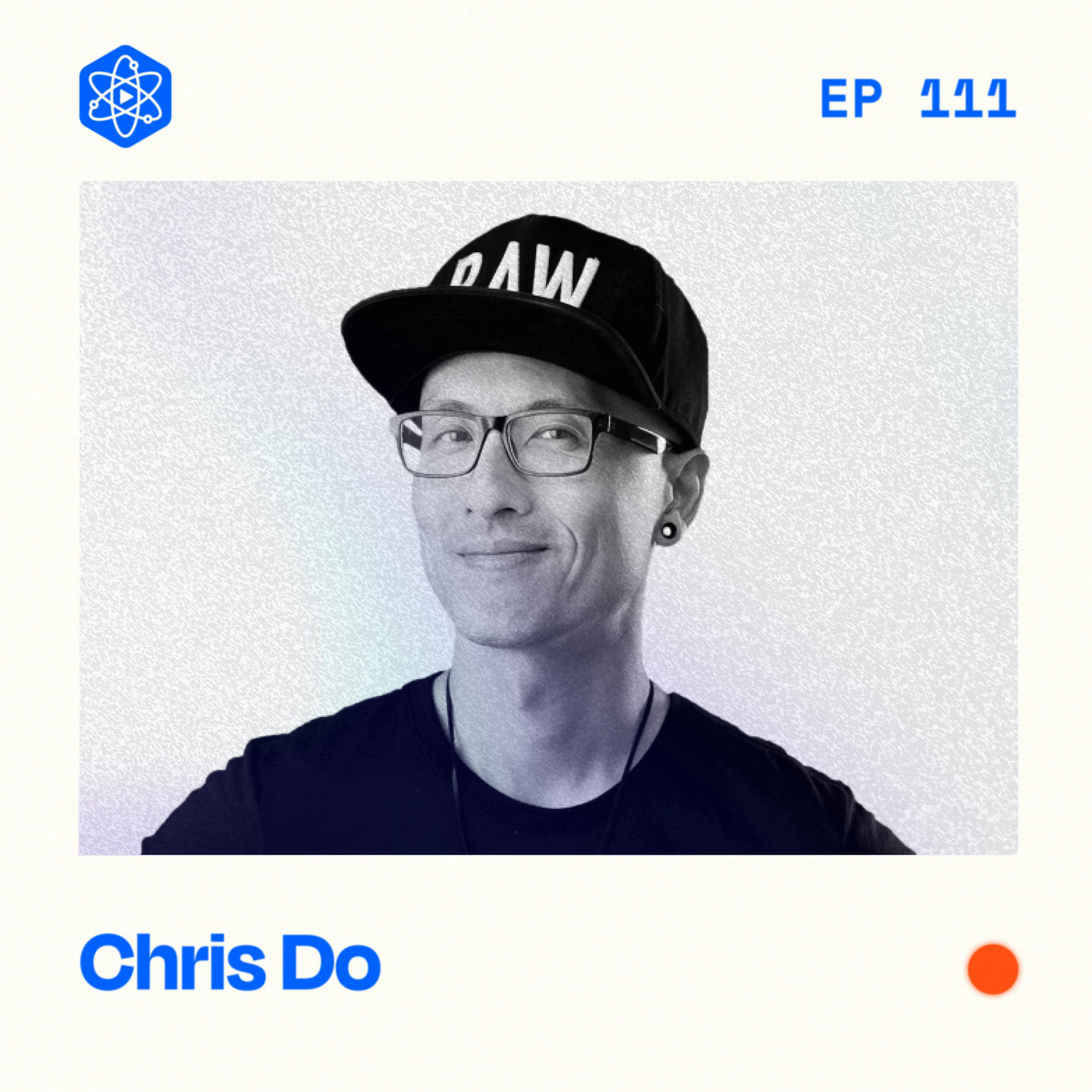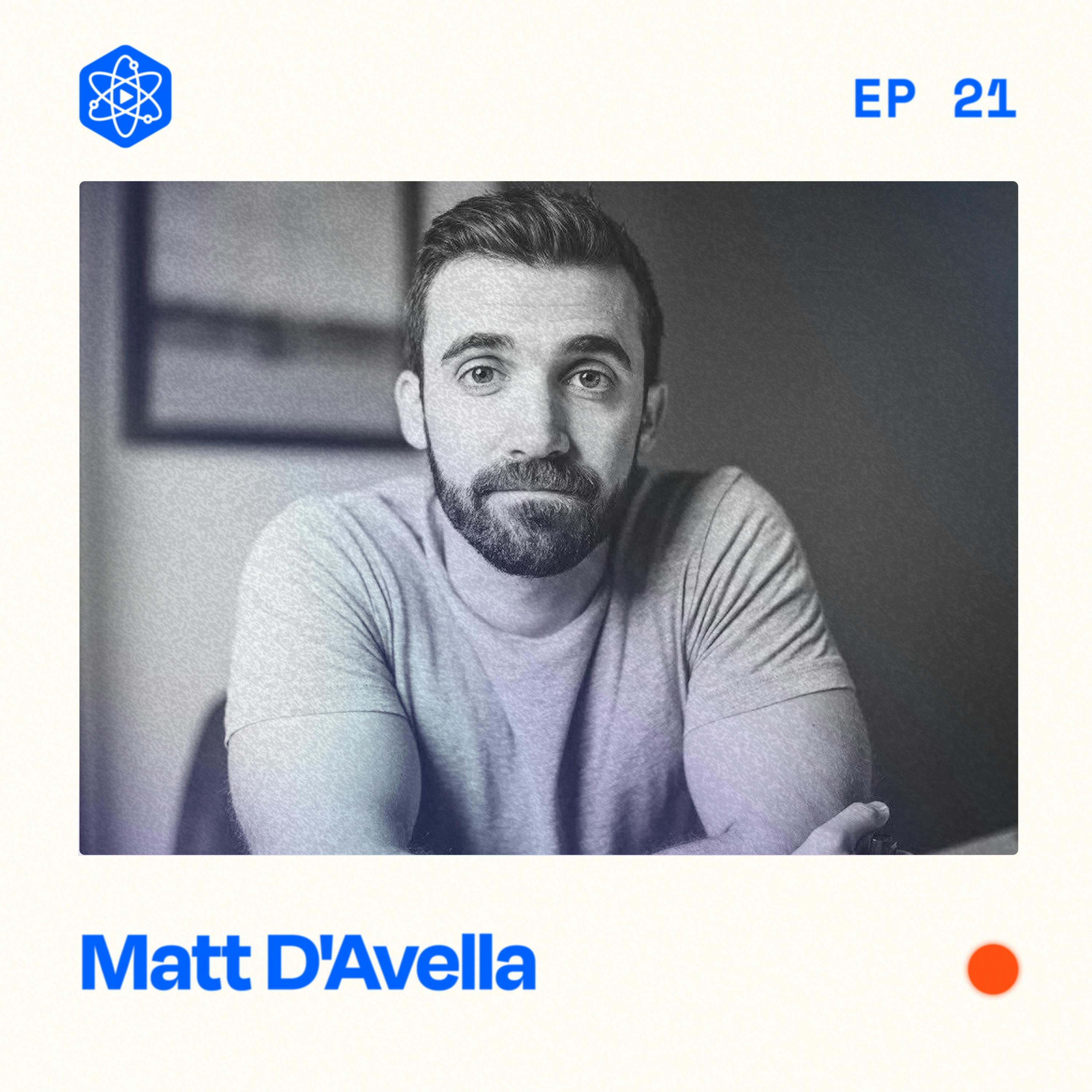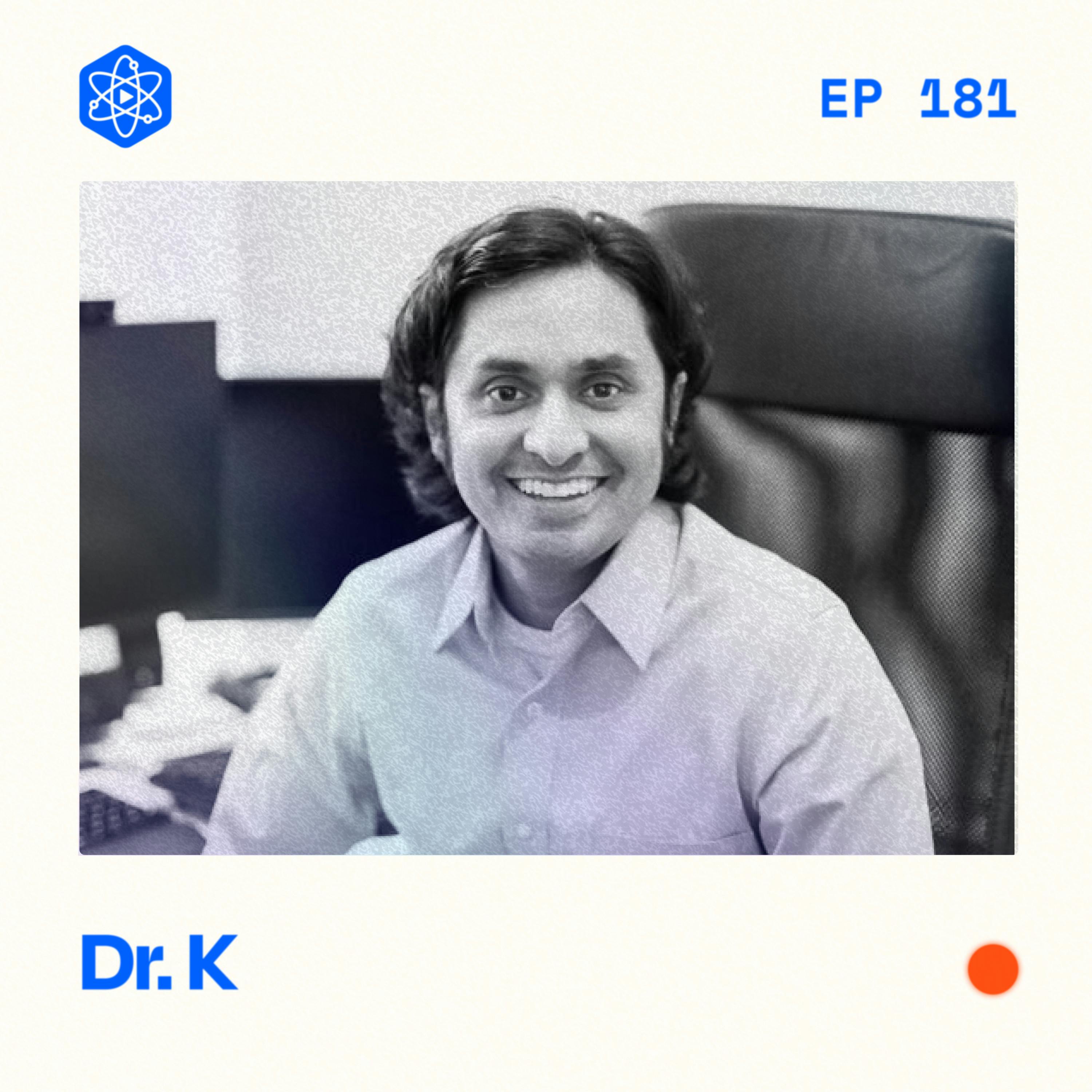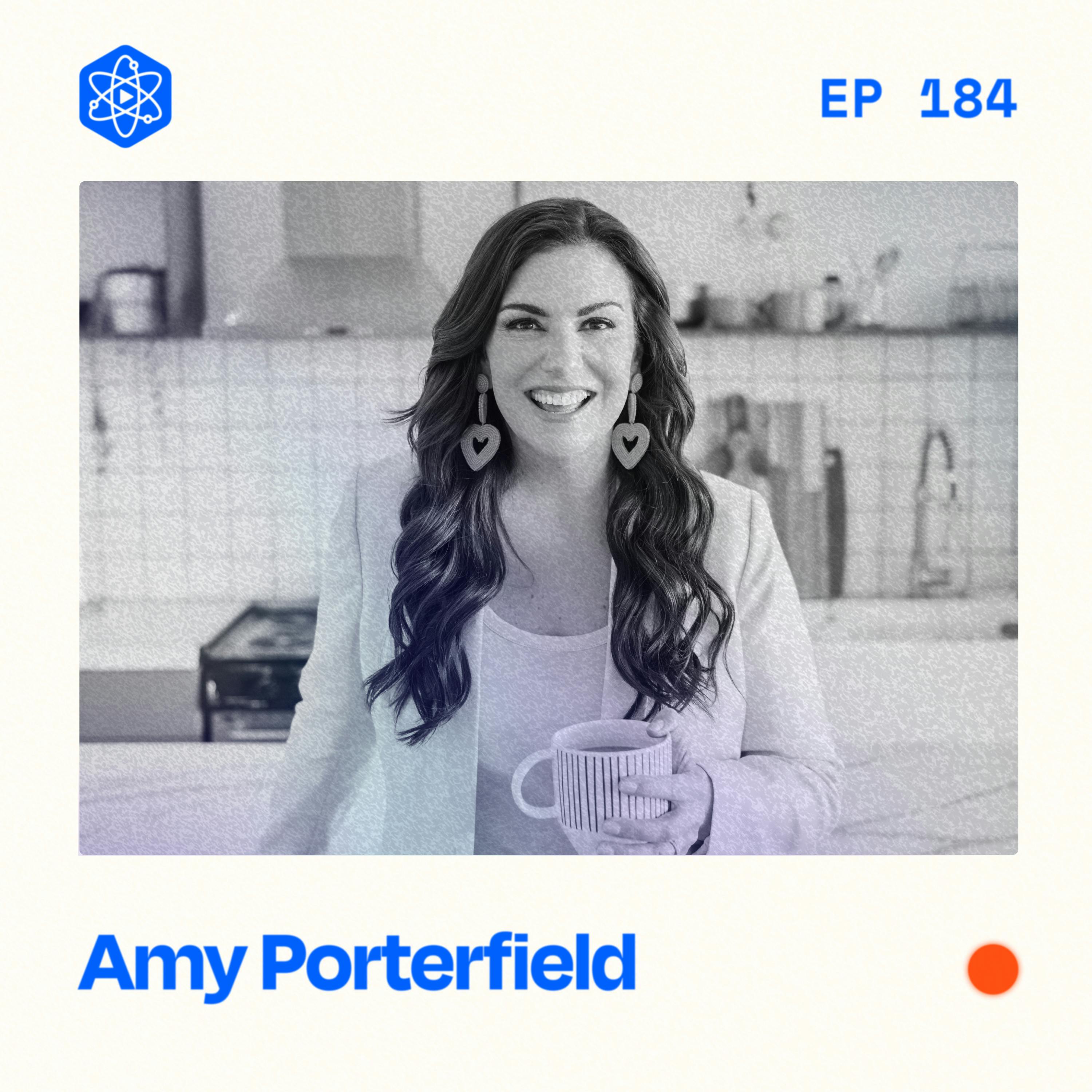Daniel Murray is the creator of The Marketing Millennials, a podcast and newsletter focused on today’s marketing leaders and tomorrow’s stars.
WATCH
▶️ Watch this episode on YouTube
***
EPISODE DESCRIPTION
Daniel Murray is the creator of The Marketing Millennials, a podcast and newsletter focused on today’s marketing leaders and tomorrow’s stars.
Daniel is also a creator for Workweek and personally has 110,000 followers on LinkedIn. The Marketing Millennials Company page has more than 500,000.
In this episode, you’ll learn how to use LinkedIn company pages well, some of the nuances that make your content stand out, when to use images vs. text, and why your goal should be to create a pattern interrupt.
Full transcript and show notes
Follow The Marketing Millennials on LinkedIn
Subscribe to The Marketing Millennials
Follow Daniel Murray on LinkedIn / Twitter
***
TIMESTAMPS
00:00 - Daniel Murray’s Growth Secret
01:32 - Daniel’s Path to Marketing
03:17 - Marketing Operations VS Marketing Automation
05:01 - What ACTUALLY Makes You Successful In Marketing
06:26 - How Marketing Should Be Taught In College
08:06 - Creating A Space To Learn Good Marketing
13:02 - How Should We Think About Company Pages
18:16 - LinkedIn Has Great Organic Reach
20:33 - Company Pages Are Like Meme Pages
23:48 - Why Are People Posting Dark Mode Tweets?
28:48 - Gaining 40,000 Followers PER MONTH
30:52 - Using Other People’s Content To Grow YOUR Following
33:15 - Image VS Text Posts
34:05 - Speak The Language of the Platform
36:55 - What Makes a GREAT Post?
38:27 - Testing What Works For You
***
RECOMMENDED NEXT EPISODE
***
WHEN YOU'RE READY
🚀 Get CreatorHQ (creator operating system)
🧪 Join The Lab (private membership community)
***
CONNECT
***
SPONSORS
💼 View all sponsors and offers
***
SAY THANKS
Daniel Murray 00:00
In the last year, I think my company page just got over 110 million impressions and content.
Jay Clouse 00:09
What?
Jay Clouse 00:09
Could LinkedIn company pages be the most underrated way to build an audience right now? That's what Daniel Murray thinks. And he's been building a massive audience using LinkedIn company pages for almost three years now.
Daniel Murray 00:21
This was pre pandemic, so it was 2019. I heard Gary Vee say like, you have to buy underpriced attention. And I saw LinkedIn had underpriced attention. Let me just start posting.
Jay Clouse 00:32
Daniel is the creator of the marketing millennials, a newsletter and podcasts focused on today's top marketing leaders in tomorrow's top stars. Daniel has more than 100,000 followers on his own LinkedIn personal page, and more than 500,000 followers on his LinkedIn company page.
Daniel Murray 00:50
What a company page lets you do is put out content at a more rapid rate. And also once you start hitting a level of good amount of followers, I think it just gets out in the feed more often.
Jay Clouse 01:05
So in this episode, you'll learn how to use LinkedIn company pages Well, some of the nuances to make your content stand out when to use images versus text and why your goal should be pattern interrupt. I'd love to hear your thoughts on this episode. As you listen, you can find me on Twitter or Instagram @jayclouse tag me, let me know that you're listening. If you're here on YouTube, hit subscribe and leave a comment down below. And now let's talk with Daniel.
Daniel Murray 01:43
My mom, when I was growing up was an entrepreneur. And I used to go to trade shows with her. I used to see her work. And I just enjoyed the creative side of what she was doing. I didn't know that was called Marketing at the time, I just knew that it was something that I enjoyed. And I became OIC okay at that time. And then I was more of a football and sports guy I grew up and my parents we emigrated from South Africa. So they didn't know the American school system. The only thing they knew that was common nowadays is sports. So we played sports a whole career. And sports was my way to get my college paid for without having to my parents to pay for it. Going into college, I became an entrepreneurship major. Because I didn't know if like marketing was the thing I just knew I liked starting stuff because my mom and I wanted to be like my mom. So I did an entrepreneurship. And I started taking Martin classes. And I was like, Okay, this is fun, I understand this more, I can be creative. It's not structured and rigorous, like finance, where you have to figure out a formula like the formulas always change. So I had an internship in college for Qualcomm, and I got to experience marketing firsthand from like a big tech company. And I was really enjoyed that. And then after college, I knew I didn't want to go into sales or anything. So I just picked the first marketing job. And it was a marketing operations job. And that's kind of how I landed into it. But it was a whirlwind of just testing what I liked. That's why I became an entrepreneurship major, because I didn't know if that was the thing I like to do.
Jay Clouse 03:27
Yeah, I was gonna ask you, you just mentioned marketing operations. And I see you've also spent some time in marketing automation. So I was gonna ask you just to share kind of what those two disciplines are within marketing, because I haven't heard those terms used all that much.
Daniel Murray 03:41
They're kind of sometimes interchangeable, and sometimes not. So marketing automation, just think is the tech behind how marketing works. So managing your marketing operation, a market marking automation platform, managing how those integrate with each other managing how belting campaigns and they're making sure that campaigns are tagged correctly, making sure they flow correctly. So it's basically the plumbing and then marking operations a little more broad, where it takes in both tech and insights. And you mix it with people. So it's basically the process building for the whole marketing teams from end to end and the buyer mapping so how can I make the buyer experience better? With our technology that we have? How can I make the marketing team more efficient with the data that we provide them the tech we provide them the easiest way to explain it to people is and I like this analogy is you go into a house you look at the house as marketing is all like the beautiful bedrooms and the kitchen and the outdoors and how it looks but nobody ever goes and checks. Does the light switch where does the plumbing work? And that's like Mark operations. It's it's the connectivity of all departments all All technologies, it's basically the connective tissue of marketing.
Jay Clouse 05:03
I like that and also hot tip for people watching this if you're buying a house get an inspection done. Exactly. I want to talk real quick about your experience learning marketing. In college, I also graduated with marketing degree. And there are very few things that I can point to as I learned this in my college marketing classes, and they were still relevant. And I still think about them. Is there anything that you learned in college that you still think about and apply today?
Daniel Murray 05:32
The things that I did learn in college was gained from college football, more than a game from my marketing classes, because I think what actually makes you successful in marketing are learning how to practice learning how to be consistent, learning how to put in hard work, and outwork people, learning competition, learning how to deal with things under stress, all those things were like the soft skills stuff, then, and also teamwork. I think teamwork is a huge one to all those soft skills. I can pull up anything that I learned in my marketing class, I think, What college did do for me and not ragging on colleges, that it actually did give me direction to know that marketing was something that AI is a little bit interesting to me. So that was a good part of it. It it steered me into the right direction. But I think I could have been steered in the right direction, if I just get went to a company started testing multiple times.
Jay Clouse 06:32
Yeah, I'm not trying to rag on college, either. Because I think college did a lot for me generally, as well. But it seems like and maybe this is just a function of how fast technology is evolving over the last couple of decades, it seems like it'd be difficult to even get through the review process to create relevant curriculum before that curriculum related to marketing today is no longer relevant. You know what I mean? Because it seems like everything is just moving so fast today in terms of what's working, and how quickly it changes.
Daniel Murray 07:03
Yeah, I mean, if I were to develop marketing curriculum today, for Mark, like a marketing team, I would, I would look at one heavy on psychology classes, learning how people think, why they think why they do things, copywriting, knowing, like how to write persuasively, and how to do it, learning how all the fundamentals of data, how how finance connects to marketing, how stats connect to marketing, I think those would be like good fundamental things to get me better at marketing. But they you go into some of these classes, and it's very broad, very outdated case studies and stuff like that. But if you just they just taught the fundamentals, I think a lot of people would be successful. I think a lot of marketers today still don't know the fundamentals so that it could totally change a marketing degree, if you just taught things that haven't changed in years, great. copywriting is still gonna be relevant, great design is still going to be relevant. Knowing people is still going to be relevant. It's just this technology, the platforms that how things are executed are different. So instead of learning the how learn the foundation of things.
Jay Clouse 08:17
So what led to the marketing millennials, the the project you're spending most of your time on today.
Daniel Murray 08:23
This is a funny answer. But it came from testing because I wanted to prove that LinkedIn had high organic reach, and people in my company at the time didn't see it. So I was like, Okay, let me post on my personal profile. And I was like, Okay, I have 1000 followers, and I'm getting 3000 impressions. This is pretty insane for like the ratio of what it is. But as I started posting and growing, I was like, I need a place to have more creative ideas. And the way I get creative ideas is from conversations and talking about the marketers. So I thought a podcast would be the great, great thing. And it also was allowed me to do something I haven't done before and try something new. So I started the Margie Millennials podcast just because I wanted to create more content for LinkedIn, the page, the LinkedIn page came about because I didn't want to only post podcast stuff on my LinkedIn page, I wanted to have separate the two things but then I quickly realized that a LinkedIn company page should be treated like a personal page, but just specifically focused on a niche that you want to do. So instead of promoting a podcast and promoting things, it's more just like giving information giving information giving a page and then posting a little bit about it giving information so more building up an audience on following for something that you like and love they like and love instead of promoting myself and I think that's where I started realizing that just giving long term is the way to grow an audience and then later on asking is not even a big deal. to my audience, when I say go check on my blog as they'll they automatically do it because I've done it. I've been giving them value for a year or two.
Jay Clouse 10:08
When you say you were trying to prove a point and showing you this company, the reach that you can get on LinkedIn, when were you doing that testing that initial testing, what year are we talking about?
Daniel Murray 10:18
This was pre pandemic, so it was 2019. And this is maybe a cliche thing, but I heard Gary Vee say like, you have to buy underpriced attention. And I saw LinkedIn had underpriced attention. So I was like, Okay, I could talk about something, I could talk about marketing. Let me just start posting on on LinkedIn about that. Since then, my thoughts on like, what the why behind it has evolved. And now I have a why that I do it and what what keeps me passionate about it, but at first was just pure, pure, proving people wrong that this platform could do something. And then now it's gotten to a point where I saw like, how much it how much content helps people how much content isn't there out there. That's great for marketers. And back to your point about college, I just, we didn't learn much in college. So I try to keep at least the relevant information that people can learn today that I feel like, will make you a great marketer. So my whole thing came from learning from relevant people. And I totally know that people don't get served the great first boss out of college. And that's how you get lucky. If you get a great first boss or college, you can accelerate your career. Or if you start a side project, or become an entrepreneur that also can accelerate your career. But if you don't, if you go down the normal route that a lot of people go, you get drawn a boss, the boss doesn't teach you, you, you have to go find a how to learn by yourself. So I've tried to create a place where people can learn marketing in a simplified manner.
Jay Clouse 11:58
So you started posting to your own profile in 2019, did the company page come about that same timeframe or shortly after?
Daniel Murray 12:05
No, the company page came, I would say a year after that. So it took me a year to even like start a company be the market Millennials wasn't a thing. It was just me posting, I didn't get much traction for like the first like, six months, my content was all over the place. Because I didn't know how to create great content. I didn't know what how to stay niche. I didn't know. I didn't know what, what works. But quickly, when I started reverse engineering what the best were doing in the platform that started accelerating, how I did things on the platform. And it took me time to just learn it because I was a marketing operations person I never was in social. So it just was me learning the platform by doing and trying and failing multiple posts. But that's what's great about social media is if you post and doesn't do well, nobody sees it. And you could delete it. And if it does great, a lot of people sees it. But it's better to fail when nobody's looking than fail. And you have a huge audience. So I'm glad it was failed a lot. The beginning have had some bomb posts that didn't do very well.
Jay Clouse 13:14
Well, this is what kind of spawned this conversation is you're telling me how effective the company page for the marketing Millennials has been? I'm looking at it here. And it has basically 440,000 followers as a company page. And I thought company pages were dead and worthless. And nobody used them. And I'm looking at this and I'm saying there's something here that I got to understand better. So for for me in this show, like I have a company page for the podcast, I have a company page for my newsletter. And literally the only posts on them are Hey, we don't post here, you're selling to the website. But you're you're getting me to think down down the line of using it. So how should we be thinking about company pages on LinkedIn? How should we be using them?
Daniel Murray 13:56
I like to think of it as a personal page, but very focused on what you value you want to give the audience. So if you talking about content graders, for example, all the the content should be about how I help the content creators, how content creators can create better content, how to monetize your content, it should just be all about them in a fun engaging way. That's not linking back to your website or linking back. It should be. I'm just providing you as much value as possible. The way I like to think about is, you see these pages that blew up meme pages and finance pages and all these pages on Instagram where they shared a lot of like valuable stuff and they grew because it was just like the like good information about certain topics. I like nobody was doing that on LinkedIn. I think things like people just thought of it as this is a company I work for so I have to it's got to be a good ticker of like what's going on in my company and I think I flipped the net reven said like this could be just a place to get his underpriced attention, nobody's doing it well. So if you do it well, there's a lot of attention to be to be captured how I think about it as one, think of it as a personal page, don't think of it as your company, because then you're going to start posting everything about your company, to make it a source of value, be the best place for marketers to come get content be the best place for content creators to get content be the best place like third, I would say like, make sure your audience is actually on LinkedIn, because that might not make it successful. A lot of people, a lot of people, I am an advocate, but I don't think everybody should do a LinkedIn page because I think not everybody's audience is on LinkedIn. But I do think when channels have underpriced attention, and when people when there's huge value and you see these big companies with big followings, I think you can gain a following. And also you can be a place on another platform where nobody's doing it. I knew Instagram was diluted with content. I knew Twitter was diluted or content. Nobody was posting from a company point of view on about marketing. There was other people doing it, but other which I later discovered, but when I was doing it, it was just focused on marketing. And that's how I've grown it. I don't really ever have a CTA to go look at my podcast. Now I have a little CTA to go to my newsletter and stuff like that. But I don't outrightly say it, they go to my newsletter, I let people discover it. So it's all about value, value value. And what it does is like organically, people go find my podcasts and my podcasts up downloads go up organically, people find my newsletter organically. People talk about me, I'm in the feed a lot. And I'm in the feed double time because I'm posting from myself and Mark and millennials.
Jay Clouse 16:59
And those are two distinct sets of content. It's not like you're posting the same thing to both pages, right?
Daniel Murray 17:05
Yeah, I think you got to think of your personal brand is would you want to be known for a company pages? What do you want the company to be known for? What the company who is the company serving what people are doing totally wrong, as they think of it as I share about our latest employees and our webinars that we're doing? And I just make it about them them them when Why would someone follow something when it's just about you unless you just a company they want to work for which is not going to be your target audience.
Jay Clouse 17:33
After a quick break, Daniel and I talk about how he utilizes LinkedIn company pages. And later we dive into his strategy for pattern interruption. So stick around and we'll be right back.
Jay Clouse 17:43
Welcome back to my conversation with Daniel Murray. One thing I noticed with Facebook pages a few years ago was that if you weren't paying for ads, you didn't get your content into the feed very often. So I asked Daniel, if LinkedIn prioritizes company pages differently.
Daniel Murray 17:56
I actually see that when you post more times when a company page gets, it consistently gets the same amount of reach. But if you post like multiple times on your personal page, they actually throttle you a little bit. So I think a company page is just a hidden gem of consistently putting out content. It has never, I've never been like really throttle on my company page. I also think the reach is very crazy on a company page. For example, in the last year, I think my company page has got over 110 million impressions and content. So that's like telling you that like there is a lot of reach to go around. And not a lot of people are doing it well. So like this opportunity when not a lot of people are doing it well.
Jay Clouse 18:49
And I'm thinking from a consumer perspective. I can't remember ever seeing a company page post on LinkedIn and following it. But obviously people are doing it. So how do you how do you get people interested in following a component company page versus a personal page? Because that does seem to be different behavior on LinkedIn versus other platforms? Like, we don't really follow brands on Twitter. We don't really follow brands on Facebook or Instagram nearly as much but it seems like the culture wants to follow people. But what you're saying is LinkedIn that behavior seems to be a little bit different.
Daniel Murray 19:25
I think it has both I think you LinkedIn inherently people. Good followed a lot. But I think what a company page lets you do is put out content at a more rapid rate. And also, once you start hitting a level of good amount of followers, I think it just gets out in the feed more often than not because I think what happens is LinkedIn once companies to posts so there's enough people boasting that there's not enough companies posting so they want to show A company company data up, because otherwise what's incentive for a company to create a page and be consistent on there and post jobs on their job board and pay to be a part of it. So they want you to poke put out content. The thing is, what's the little nuance, which I'll say is that I don't think of the page as a company page. Like I think it is like someone following like a meme page on Instagram, a lot of people are following meme pages on Instagram. Like they're getting their best meme content, they're getting their bedside content, a lot of people find like, those type of pages on Instagram, a lot of people find those type of pages on, on Tik Tok. It's just when you think of it as, like, I'm posting from all a pub, for example, and I'm just posting about like, or like posting from a certain company, then the mindset is different. But I took the idea of not treat as a company page treated as a page, just where people can get a bunch of great content from it. And that's it, you see it and you see it all the time. And Instagram it works against you see people these big accounts like Bravo, bravo, people follow Bravo, gowns, sports people follow, like, over time, and all those all those accounts, I see it as the same thing on LinkedIn. But LinkedIn is where marketers I hang out. So marketing content should be on LinkedIn. So I see it as a page where it's not a company, it's a page entertainment.
Jay Clouse 21:30
Yeah. When you say mean, I think people, it'd be easy for people to think that it needs to be funny or irreverent. But when I'm looking at the page here, there is some of that, but it's not the majority, like the majority that I'm seeing is resharing helpful, kind of like value dense content, often from other marketers. So how do you think about that? If you think about as a meme page, how much do you think about humor and entertainment playing a role?
Daniel Murray 21:55
I think it all depends on like, who you want to be known for as a brand. I think marketing millennials, I want to mix a little humor into it. Because sometimes you just need a laugh and your business day. Sometimes you just need it. But I also think it mixes in with the content that's valuable as well. I mean, the better name probably is like anonymous pages, and like the anonymous pages will post like screenshots of like, their their tweets, like all over or whatever. They put quotes, like quote of the day, and you just have to think of it as a place where it's easy to digest, someone could do it very quickly, really fast. They get information quickly, and they can go about their day. And I think if I wanted to go network at a trade show, I would need to refine my pitch to be a little broader because nobody, not everybody does the same profession as me. But if I wasn't a, like exec dinner just for like marketing, operations of media people I can talk more nuanced, like what are some marketing ideas that can be simplified to the masses that they can, they can consume, it's fun, it's easy to digest the good and the tweets. The reason I chose tweets where they interrupt the feed, there's a dark tweet on the feed interrupts all like the white text post. It's big. So it's easy to spot the text really fast. And it's basically like a headline, if you want a headline, people can easily read and react quickly and then go on there fewer long posts you have to commit yourself to.
Jay Clouse 23:28
It does seem that when I see people sharing screenshots of tweets and things on LinkedIn, they are typically choosing like the dark mode, black background, which I'm starting to realize is probably been tested and probably been seen to show higher engagement. Have you seen that with using the dark mode, black text background on a tweet versus light mode, white text?
Daniel Murray 23:49
I mean, I did this like a year and a half ago before like I saw a lot of not many people, I don't even see that many people are even posting tweets that were made of maybe you're posting like white background tweets, but I was like, Okay, let's do a dark mode because Twitter dark mode, and I thought it was gonna interrupt the feed. I also back in the day when I was at snack nation. I knew that LinkedIn ads, you had different colors and LinkedIn ads converted better. So I was like, Okay, let's have a different color that's interrupting the fee that's calling out very fast, big tax. Quick. I know people will probably be asking like, okay, but this doesn't bring in any results. Like it's just a page blah, blah, blah. But if you do this, if you do this well, like my newsletter is growing at 10k a month just from my LinkedIn page. My podcast grows every month from my LinkedIn page. people reach out to me for like business requests just because of my LinkedIn page. People want to sponsor me just because of my LinkedIn page. So yes, like some of the information is a little basic, but I also think like some people aren't the audience like my audience. as His people I believe is the younger marketers who need this simple, quick advice that if they want to learn more, that's where you can bring people to a newsletter and podcast to explain what you're talking to. And if you want to, eventually, if you want to learn more, you can bring them to like a vault of content where they can learn specifically from experts in that field. So I think there's a long term play of like, when I think about social media now, I think you have to think of it in in different goal setting. So I think like, your first goal to know social media is working, is your following going up or not enough? Are people engaging or not? So when I first think about it as is, did that happen? Yes and no. So I did that without thinking about conversion for a year. Then I was like, okay, a year later, I'm like, Okay, now does this audience convert? Now? Let's start testing. And yes, now I'm bringing people to newsletter. Now I'm bringing people to a bot Gaz. Now I'm bringing people to do other things. So yes, it does convert. But I think if you think of two things at once, and you just gonna create content that is just self serving for yourself and not for the audience. So you have to think about the first way is how can I get a growing audience? The second you have to think now, once I got on the audience, does it convert? If it didn't convert, for example, I would go to the drawing board and be like, Okay, how can I create more relevant content for people to who to go to the next step of the process, but you can just think of the full funnel like the first goal is to get attention online like be top of mind and marking millennials is in the feed all the time. So it is top of mind all the time. And that's my only goal is to be is when people think marketing, I think marketing millennials, and the only way to do that is be present and showing up all the time. And the way you do the president showed all the time is have posts that have high engagement and high reach to show up in the feed and even if the posts on that I think they're pretty good. But even in the posts aren't that great for people. I'm still in their feed all the time. And they'll forget about the post, they'll just remember that mark and millions was in the feed yesterday.
Jay Clouse 27:07
When we come back, Daniel and I talk about the growth of the marketing Millennials company page and why he leans so heavily into sharing images. Right after this.
Jay Clouse 27:17
Hey, welcome back. More than 500,000 followers and a ton of daily engagement on Daniels company page still blows my mind. So I asked Daniel, what growth looked like and what we can do to emulate that.
Daniel Murray 27:28
There's been zero paid, so zero paid, but I would say what initially gave a boost to my page was having my own personal brand have like 25 to 30,000 followers. So I get started like boosting margin. Well As for myself, once I got some people following the content, big game great. It's just like the network effect. So once you start getting to scale, this scale comes big that you don't need other accounts to bring it up per se. So now like Mark Molinos does not get any help from me, but it never got help from I never asked people to like like Mark and millennials post because I know on Twitter, it's a big thing to do this, but the way I thought about it was like I was watching a lot of Tik Tok and back in like 2019 and I saw these houses coming up like hi palace and sway house and I thought about like, Okay, if I had two profiles, like pushing each other up, I can get more attention. So I just use two of my profiles to do it. Yes, I think if you had other relevant pages helping you, that's a great way to do it too. But I think you focus on one or the other. First, they focus on building your personal brand and then using it but you can start putting a little things in there, like in the company page out there to start growing a little bit. So once I got to scale on my personal brand I knew I could have I can sustain that and sustain that company page at the same time. But I didn't want to focus on that till I nailed LinkedIn down. So the first thing was, like I just understood stood LinkedIn. Now we're, I think marking millennials to date now is growing at like 40,000 a month, 40,000 followers a month. So it's growing really fast. But at first, I mean, I did get to 100,000 followers in like six, seven months like but now the scale is like going even faster. I think this year alone, I've got like 250 Like just from this year alone. So I think like once you get to levels of scale, you can scale it really fast.
Jay Clouse 29:31
I see on the posts where you're you're featuring other creators and their tweets or their posts, you attribute them you tag them and attribute them do those people ever did they ever feel negatively about you featuring or using their content to grow your page?
Daniel Murray 29:47
Nope. They actually are super appreciative because a lot of the the what I first did at first was these people didn't have followings on LinkedIn so I was giving them a chance to grow their page I've had one person my entire time reach up to me and say, take down the pose, most people actually are like sending me their posts to put off. And the thing about that is I have a very like high standard of like, what should go on the page. And I have a understanding now that I've been consuming a lot of marketing content, what works and what doesn't. So like, when I post things, there's a standard of filter that I have that I don't post certain things in the page, I don't just take people's posts, I post what I want, it has to be something I found valuable, I find like if someone gave me something great, then I'll be like, okay, but a lot of the times, it's just them trying to self promote themselves, I, I come from playing offensive line. And I've come from playing being in a marketing operation. So I was never, I didn't want to ever be in the limelight. I always wanted to hype up other people to be in the limelight, and in turn that that grows. And so I think what I'm trying to do is share great creators out there to share how, what Martin craters are out there. So you can follow, follow them, I feel like if you put stuff on the internet, it's going to be reshard, unless you have a private account, they give you a bribe, or God is not going to read your check. If you have a public account, you want that post to go as far as possible and on multiple platforms as possible. So I think that's what's easy about social media is like, if you do that, I still always have the intention that like it's not about me, it's about my, like helping marketers and helping these creators get the attention. So I'm still like trying to bring up creators when I can and find the creators that I are doing great things and not a lot of people are looking at now I have a platform to do it, which I love that I can just bring up a creator and get them a following and post their content and share something great from them, which is a fun, fun thing to be able to do now.
Jay Clouse 31:54
On your personal page, I would say two out of every three, maybe even three out of every four posts seem to be images, or at least have an image as part of it. And a lot of those are tweets that you've put out that are text based. So you've you've chosen intentionally to use an image of a tweet of your own creation, as opposed to using the text from your tweet, I imagined some testing went into that as well. Can you talk about that choice and why an image is the way to go.
Daniel Murray 32:21
It's just easy to consume my I just thought of myself scrolling through LinkedIn beaten, luckily, the LinkedIn feed isn't that great. So it's like the way you get fed content is not that great. So like, it's not hard to stand out in the feed of LinkedIn where like Twitter has a lot of it to follow, and you get a lot of great stuff. And you get mixed with a lot of great content. I think the bar is very low on LinkedIn of like great content, so it's easy to stand out. So but images for me just stand out as I'm a visual person. I like consuming visually, I think it's easier to consume fast. I think people want quick tips they don't want even for me, when I see a long post, sometimes I'm just like, I don't want to read that whole thing. Like I just think that I just think of myself as like the consumer and be like, Okay, what would I like to consume? I think you also have to speak the language of a platform. I think like a lot of people, a lot of people come to me and say I want to grow on LinkedIn. And I'm like, Okay, are you willing to do these things with your content? Are you willing to post like this and they say, No, I'm gonna keep doing what I'm doing but grow and I'm like, okay, but you have to speak the language of the platform you have to do with the platform once if the platform changes you start doing with the platform, now that's changing too. But as long as it starts working, you just keep doing it until it stops working like the best ads you don't give up on the best ads if they can keep converting you keep converting them until they keep converting so a lot of people aren't willing to do that and I think a lot of it is very ego driven but I also think it's also intention driven I think like if you want to have 5000 people following you that is just pure your audience pure in like in depth content then yes, like post in depth content all the time if you want to grow your following you need to start getting people and the outer circles and the rim that don't really know about marketing that want to learn about marketing that know about marketing but don't know about that part of marketing that know about that part of marketing but never heard you say something like that before you need more out there to cast a little bit of a wider net. I think marketing's already niche enough like for, for me. I do go Nietzsche in the sense that like my name, technically has niched me down which is not intentional, but it has doing the marketing Millennials like most my following is millennial marketers. But Surprisingly, there's a lot of like younger people who want to learn from Millennials also falling into this also, like older people that want to learn from millennials that are falling too. So I get both sides of things. But I think at the same time, it's like, it's what your end goal of what you're trying to do on the platform as if you wanted to just be like a specified expert at one thing, you just stick with that one thing and go hard. And the one thing if you want to grow an audience bigger, like my audience, like you have to go broader and wider and simpler and figure out ways to get the most attention. People don't want to spend time on understanding, like what makes a good post, like even if you do a normal text post, like, what makes a great post, like the first line has to have be eye catching. Otherwise, you're it's like what makes anything good or good, like first line has to be eye catching, then the second line has to take you to the third line, the third line has to have some some story and meat that you could take aways. And then at the bottom, you have a call to action for engagement, like a lot of people just want to just throw a post out there and think it's going to work. But if you're not going to have like a strong hook to get people reading, have insights that people are like, create emotional response, like okay, I was either entertained there, I was educated, I was informed, I never knew that and made me think differently. And I'd never thought about something that way, you're not going to create a great post, I think a lot of people just think of it as Oh, my content is good. Because there's good information, a lot of them do have good information. But if they just restructure their posts just a little differently, they can reach a wider audience. It's just they don't spend time on actually like formatting the posts for the platform. It's like if you go to another country, for example, like does different platforms like Tiktok and LinkedIn, like they're two different plasmids, like speaking of you speak LinkedIn on Tik Tok at Tech speaking French in the United States, like nobody's gonna start understanding like what you're doing, like you have to speak and do what the platform tells you to do.
Jay Clouse 37:07
What's the line, though, between being native to the platform? But also, this pattern interrupt that you've talked about a few times? That seems powerful in its own way? How do you know where the line is of this interrupts the the pattern that people are used to, but it's not so far afield that people tune it out.
Daniel Murray 37:27
I think that all comes with testing, I think you have, you're just trying new things. I think a lot of people are stuck in best practices, because they see other people doing things. And it just takes one or two people to start doing something different to change the way people act on a platform. I think a lot of people just follow other people. So it's just like, Okay, this is how it's done. I should be doing it like that. And I think that's one I think, too, it goes back to like general like marketing principles like, like, in a sea of sameness, you have to be different. Do what you are great at on the platform, like if you're great at video, like I think I'm not that great at videos, I don't do video, if I was great at video, I would be doing more native LinkedIn video stuff, even though it doesn't get as much reach it still is very builds personality, but it brings connection that you don't do. If you're a good writer, stick to like text posts, because that's, that's the thing, if you're good at creating images, or understand images, create images, if you're good at writing, and know how to just use Canva, you can do the same thing with two things like image and, and writing. So I think it's also doing what's like native to you and what you're good at. But I think you always got to be testing in testing new things, if you want to stick out a platform, and you got to try new things like, like threads used to not be a thing on Twitter. And now they're a huge thing. But it took a couple people to write great threads to start doing it. And then some people discover that if you put images in each thread, it does does better and some people so it just takes like people to try things in new waves to make platforms like want to do that. And it takes a couple people be like, Oh, that's interesting. Like, I like that. Oh, that's interesting. I like that. So but it comes down to like going back to what I said before, it's like learning like fundamentally like, what gets people as attention. And what sticks out and like an image with a bunch of texts is basically a big headline that you're capturing attention in the headlines, catchy, relevant, high opening, informative, educational, is going to get people to like and stop. So I think a lot of people just stop thinking about the way now.
Jay Clouse 39:47
I was not prepared to be so optimistic about the future of LinkedIn company pages. But Daniel showed us a real example here. So whether you take his advice and apply it to your personal profile or company page, I think you will see some success. If you wanna learn more about Daniel, you can find him on LinkedIn. Just search Daniel Murray or find his company page the Marketing Millennials. Links to votes are in the show notes. Thanks to Daniel for being on the show. Thank you to Connor Conaboy for editing this episode and Nathan Todhunter for mixing our audio. Thank you to Emily Clouse for making our artwork and Brian Skeel for making our music. If you'd like this episode, tweet at me @jayclouse, let me know I'd love to hear from you. If you really want to say thank you, please leave a review on Apple podcasts or Spotify. Thanks for listening. I'll talk to you next week.








